It’s never been easier to say ‘oui’ to an itinerary combining some of the most picturesque areas of France – the Loire Valley and Champagne, gateway to Eastern France.
Two easy hours. That’s all it takes for travellers to hop by direct TGV connections between these unforgettable French heritage destinations: a visit to the enchanting châteaux and vineyards of the Loire Valley and the first-class Champagne ‘houses’ in the historic towns of Reims and Epernay before continuing to explore further east.
First Stop Loire Valley
The Loire Valley is nicknamed the ‘Cradle of the French’ due to the abundance of enchanting vineyards, orchards and fields that line the banks of the Loire River (France’s longest). The lush landscapes that stretch for 280 kilometres between Sully-sur-Loire (in north central France) and Chalonnes-sur-Loire (to the west of Angers) have been listed as UNESCO World Heritage, as have a number of the châteaux and other monuments along the river valley, their ancient walls whispering unhurried stories of French history, events and equally feted French royalty. Regardless of your interest – whether châteaux, gastronomy, vineyards, architecture, or a combination – there are numerous itineraries by car, bike, on foot, or even down the river by boat, that explore the Loire’s rich history and tantalising terroir.
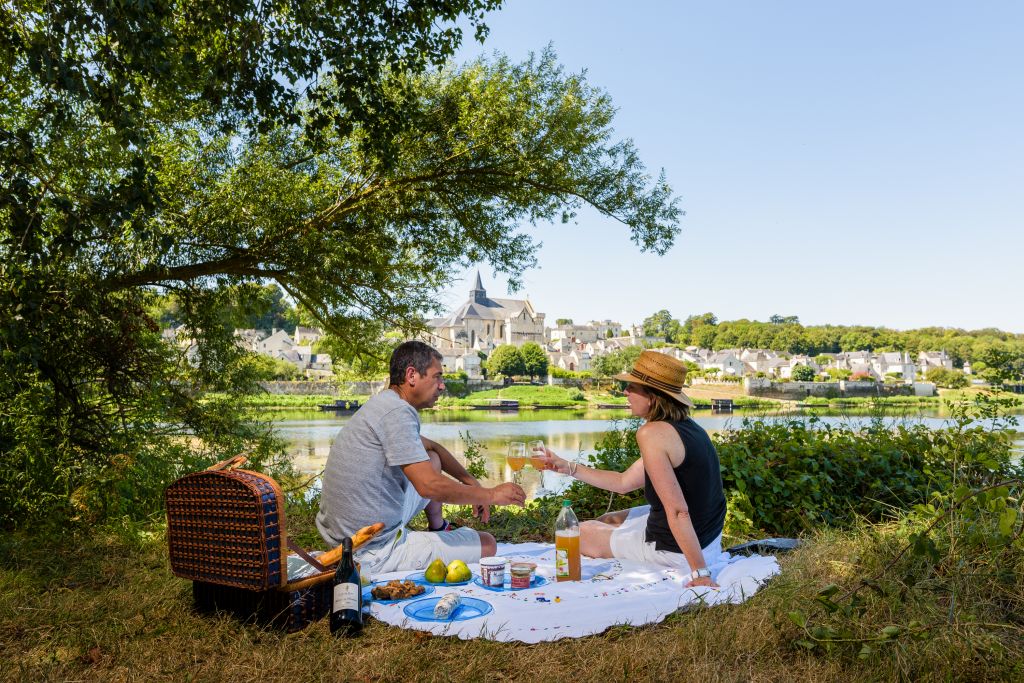 Candes St Martin (Copyright: ADT Touraine-JC-Coutand)
Candes St Martin (Copyright: ADT Touraine-JC-Coutand)
Enchanting châteaux of the beautiful Loire Valley
The enchanting châteaux of the Loire Valley such as Chambord, Chenonceau, Amboise, Blois and Villandry, once stately homes of French kings and nobles, are quite simply breath-taking, their magnificent gardens are really attractions in their own right. There is enough variety here to cover a four or five-day itinerary, not forgetting the nearby home of Leonardo da Vinci, Château du Clos Lucé. The great master is said to have designed the magnificent double-spiral staircase of the 400-plus room Château de Chambord.
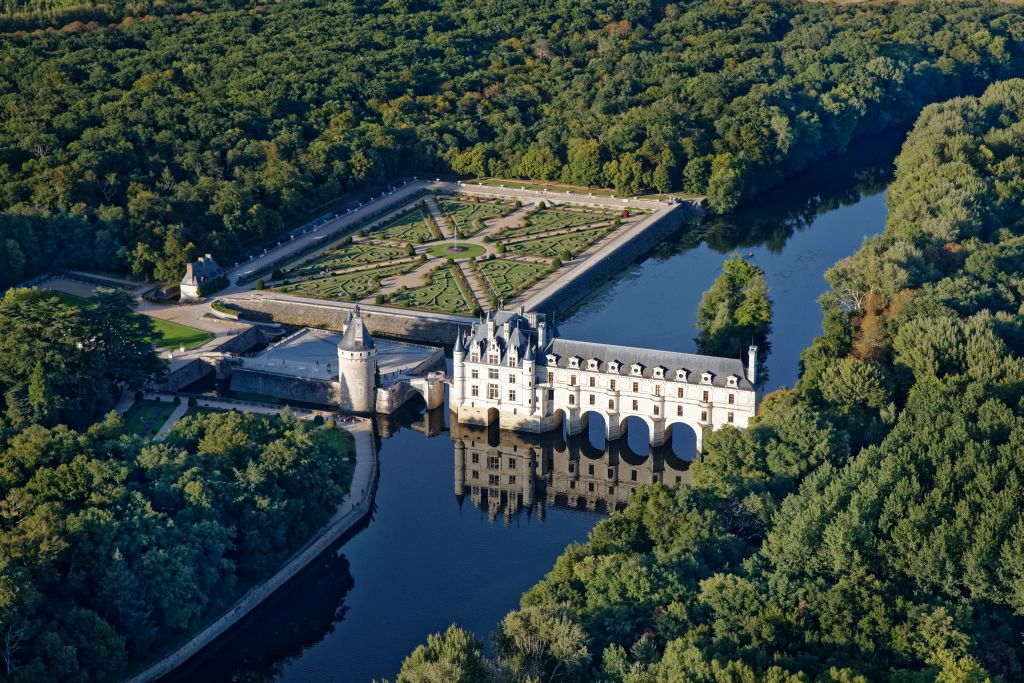 Chateau of Chenonceau from the sky (Copyright Ch. Mouton)
Chateau of Chenonceau from the sky (Copyright Ch. Mouton)
Châteaux and Vineyards go hand in hand
With wine-growing in the Loire beginning around the fifth century, it’s little surprise that some of the châteaux are also wine-producing estates, such as the Château du Rivau, which produces AOC Chinon, the largest of the Loire Valley appellations, famous for its reds. Try also the Cave Monplaisir just outside the town of Chinon on the banks of the Vienne, which showcases three producers in a former underground quarry. The medieval Château d’Azay gives its name to the red, white and rosé wines of AOC Touraine- Azay-le-Rideau. The castle’s 6-hectare gardens are a masterpiece of botanical arts. Vineyards surround the village of Amboise, which boasts two châteaux: the royal Château of Amboise, considered to be one of the most beautiful in the Touraine, and Le Clos Lucé, home to the great master Leonardo da Vinci. For sampling and buying wines from AOC Touraine- Amboise, visit the Caves Duhard which also offers a restaurant with an attractive terrace overlooking the river. Another distinctive wine is the floral and fruity red Bourgueil, varying from a light, gravelly style to rich and smooth. The terroirs and wines of Bourgueil are presented at the troglodytic museum Cave de la Dive Bouteille, nestled in the heart of the vineyards just outside the village. For lovers of a dry, crisp Sauvignon Blanc, look no further than the wines of Sancerre and Pouilly-Fumé at the eastern section of the Loire Valley, perfected by such great domaines as Henri Bourgeois.
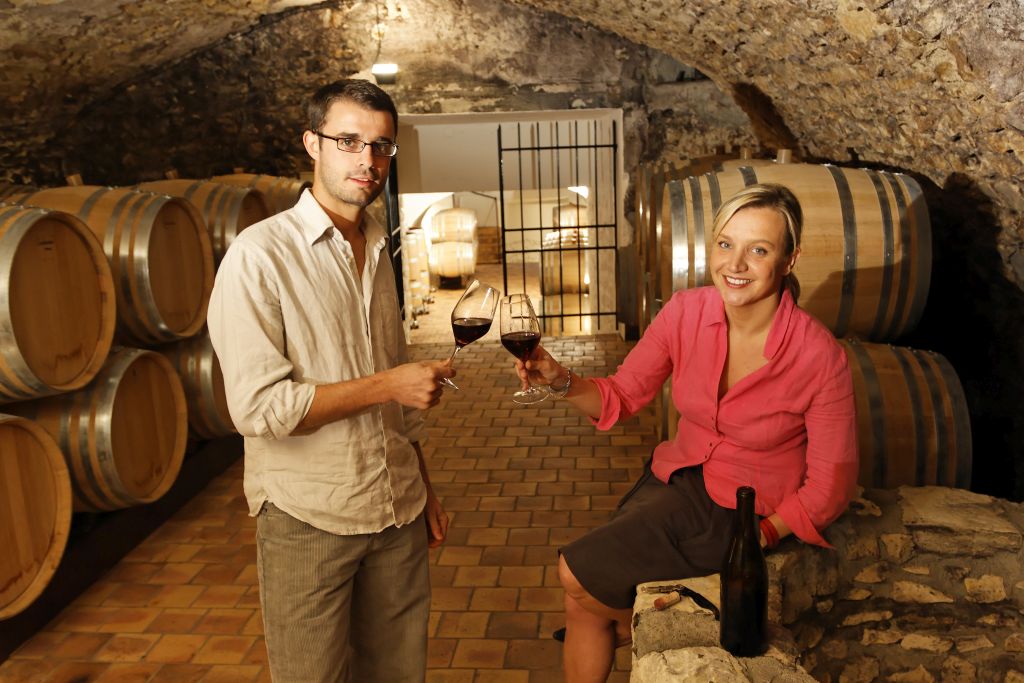 Wines and Vineyards in the Loire Valley (Copyright: E.Mangeat)
Wines and Vineyards in the Loire Valley (Copyright: E.Mangeat)
By bike is best along the Loire cyling route
The best way to investigate the magnificent Loire and soak up the natural scenery is by bicycle. A dedicated cycling route traverses the length of the Loire, reliably signposted and with a thoughtful degree of accessibility. The Loire Cycle Path (La Loire à Vélo) links Sancerre with the Atlantic Ocean an incredible 900 kilometres away. Following the Loire Cycle Path, travellers will be enchanted by beautiful châteaux, gardens, villages and vineyards. Opportunities to encounter the local culture, heritage and gourmet delights exist behind almost every hillside. The most stressful decision visitors are likely to face is determining which glorious local cuisine to try for dinner.
Magical Loire Valley Towns
A popular base for exploring the vineyards and châteaux of the Loire Valley region is Tours, between the Cher and Loire rivers. Once the capital of the kingdom of France, this ‘Town of Art and History’ has an extraordinary heritage – don’t miss the magnificent stained-glass windows in the Saint-Gatien Cathedral. In Blois, combining Gothic, Flamboyant, Renaissance and Classic architecture, the Royal Château of Blois stands proudly over the city below. The old town’s lively little cobbled lanes, hidden courtyards and paved squares are testament to a by-gone era where time has stood still. The Maison de la Magie Robert-Houdin is a museum totally dedicated to magic, and performances are also held there regularly. On the eastern edge of the Loire Valley, the city of Orléans is probably best known as the place where Joan of Arc liberated the city in 1429. At the replica Maison de Jeanne d’Arc, where she lived during the battle, travellers can watch a film about her life.
Cheers in Champagne
Having liberated Orléans, Joan of Arc marched triumphantly eastwards on to Reims, to have the dauphin crowned as Charles VII, rightful King of France. Our journey likewise takes us to Eastern France, now made much quicker with the advent of the TGV line connecting St-Pierre-des-Corps in Tours to the Champagne-Ardenne TGV station in just two hours.
First stop is Champagne, with its iconic vineyards, verdant forests, historic towns and world-class landmarks. Both Reims and Epernay make an ideal base for travellers.
In Reims, the statue of Joan of Arc stands proudly opposite the UNESCO-listed Notre-Dame de Reims Cathedral, site of 25 coronations of French kings and an unparalleled example of Gothic architecture, boasting 80-metre high towers and some 2,300 statues.
Founded in Roman times, Reims was built from chalk blocks dug from vast underground quarries. Today, these ancient ‘crayères’ are linked by a labyrinth of subterranean tunnels dubbed ‘caves’, which store millions of bottles of the world’s most famous sparkling nectar. What better way to taste champagnes such as Veuve Clicquot, Taittinger or Pommery than from deep inside their cellars.
 Reims Cathedral in Champagne (Copyright freshandfearless)
Reims Cathedral in Champagne (Copyright freshandfearless)
Simply the best in Champagne
In the nearby town of Épernay, nicknamed the ‘Capital of Champagne’, prestigious champagne producers such as Moët & Chandon and Mercier line the central Avenue de Champagne. One of the most stunning buildings along the mansion-studded Avenue is the magnificent Château Perrier, once the headquarters of Champagne Perrier-Jouët, a fitting venue to house the new, interactive Champagne Wine and Regional Archaeology Museum. Make sure to also stop by the many equally impressive smaller champagne houses, such as Boizel, Georges Cartier and De Venoge. The latter also offers beautiful accommodation in the heart of the Avenue.
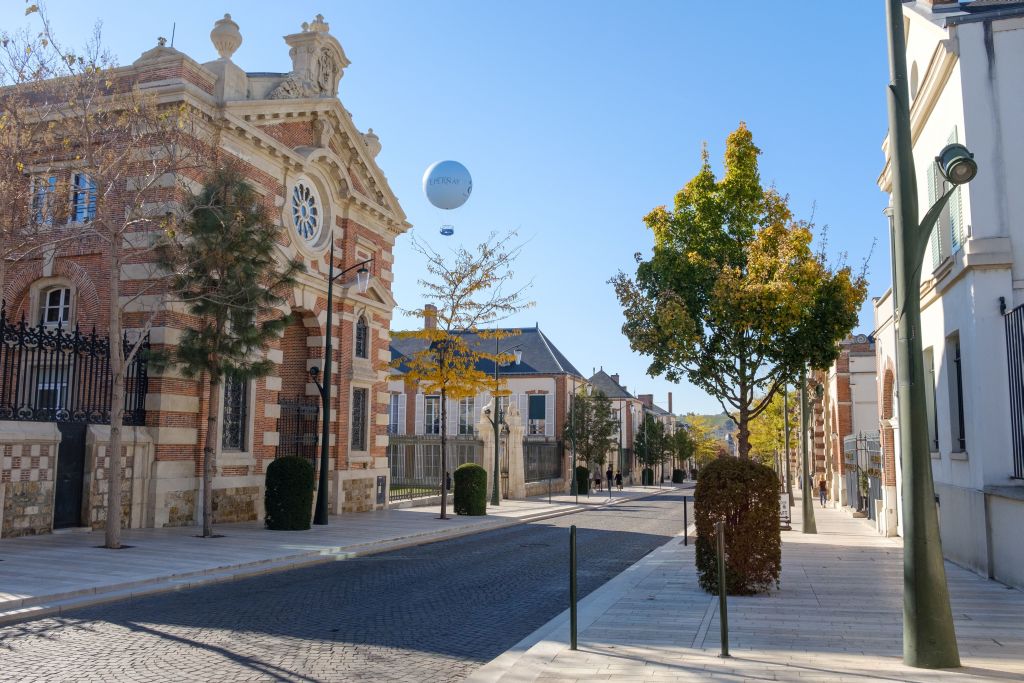 The famous Avenue de Champagne in Epernay (Copryright OT Epernay)
The famous Avenue de Champagne in Epernay (Copryright OT Epernay)
Beyond the bubbles
Beyond the downtown feted cellars and houses, there’s plenty more to explore. Pick up a bike from the Épernay tourist office and follow the banks of the Marne, via a dedicated bike path, either upstream towards Châlons-en-Champagne, or downstream towards Dormans (a train back to Épernay is available from both destinations). Note the vineyard slopes of Aÿ and Mareuil-sur-Aÿ, landscapes that are listed by UNESCO. These and other little Champagne villages are dotted along the river, with cafés, terraces, and picnic spots at regular intervals for stop-offs. You will also find a good choice of open-door cellars, where you can meet local champagne producers and taste their production.
A short diversion from the cycle track takes you up through the vineyards to Hautvillers, where the monk Dom Perignon, the Father of Champagne, lived and worked. He is buried in the abbey church. Other treasures along the way include the Cité du Champagne for a complete overview of both region and wine, and the Cave aux Coquillages which displays a fascinating collection of prehistoric fossils.
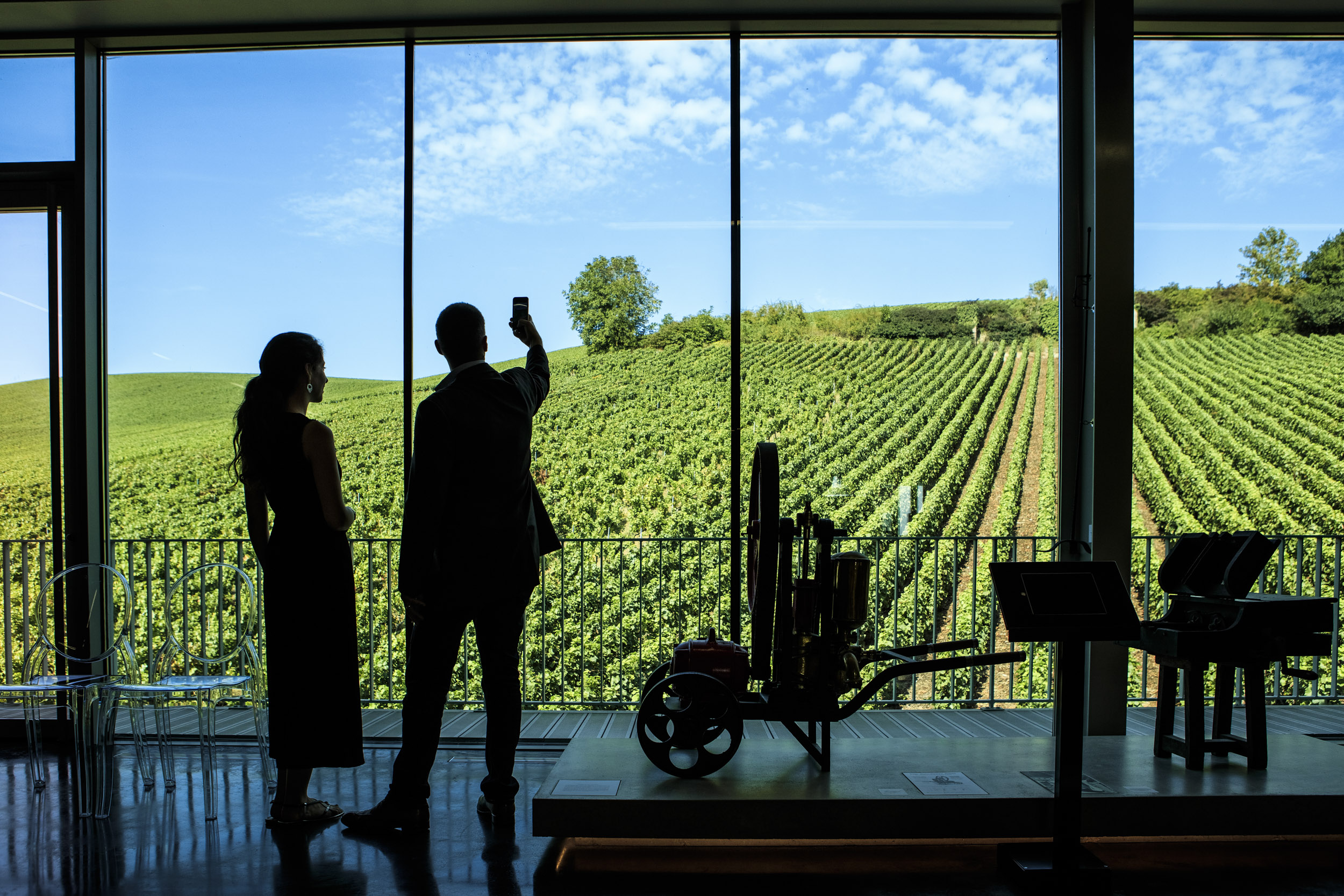 Cité du Champagne (photo © PE RASTOIN B3A8967).
Cité du Champagne (photo © PE RASTOIN B3A8967).
Further afield by bike
Beyond Champagne, there are other famous wine growing areas in the Eastern France region. The easy cycle paths of the 85-kilometre Boucle de la Moselle (Moselle Loop) take you through the vineyards of the AOC Côtes de Toul. Along the way, sites steeped in history, outstanding views, gentle countryside, bustling towns and local products ensure that this route has all the ingredients for a perfect family holiday! The three main towns around the Loop are Toul (don’t miss the 14th-century cathedral), medieval Liverdun where you can sample delicious Madeleine cakes and Nancy, the capital of the Dukes of Lorraine. Nancy is a fine example of the Art Nouveau era with its grand 18th century royal square, Place Stanislas, a UNESCO World Heritage site. Top on the list to taste are the wafer-light macarons and Bergamotes, a golden candy based on essential oil of Bergamot orange, favoured by the Royal Court. Alsace Wine Route DSC1064-Copyright ADT-Infra Alsace Wine Route (DSC1064-Copyright ADT-Infra)
Alsace Wine Route
Brimming with quaint villages producing Grand Cru wines, the Alsace Wine Route is a capricious serpentine which curves peacefully around the eastern slopes of the Vosges Mountains. The cycle path follows this course via former railway tracks, ancient Roman roads and side paths through the vineyards, the landscapes dotted with ruins of mediaeval castles and Romanesque abbey churches. Spanning 170 kilometres, this cycling route is part of the Eurovélo 5 from Reading, UK to Brindisi, Italy and takes travellers through the vineyards between the capital of Eastern France, Strasbourg, and the picturesque country town of Colmar with its carefully restored and protected tanners’ district.
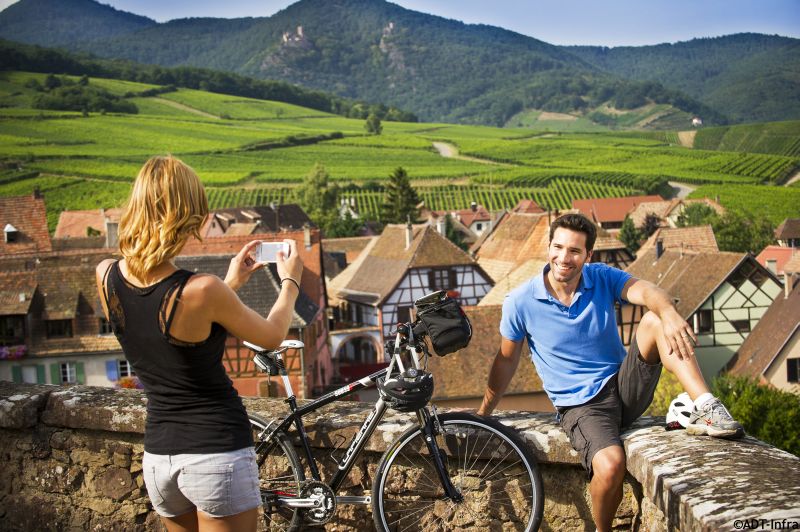 Alsace Wine Route (DSC2454-Copyright ADT-Infra)
Alsace Wine Route (DSC2454-Copyright ADT-Infra)
Tour operators specialist for Loire Valley and Champagne, Alsace and the East of France
Whether you’re holidaying for a weekend or for weeks, there has never been a better time to discover the Loire Valley and Eastern France regions with some of the country’s finest travel companies.
Loire Valley Travel (Rando Vélo)
Cycling tours for all ages and stages and fitness levels | www.biking-france.com
Europe Holidays | Luxury, escorted wine tours to Champagne and Alsace and other unique French experiences | europeholidays.com.au/tours/europe/ france
Entire Travel Group | Chateaux & Champagne | Loire, Champagne and Alsace| www.entiretravel.com.au
Further Information on Loire Valley and Eastern France
Loire Valley Tourist Board www.loirevalley-france.co.uk/
Eastern France www.visitlachampagne.travel www.boucledelamoselle.fr/en/ www.cyclinginalsace.com/en

By France.fr
The magazine of the destination unravels an unexpected France that revisits tradition and cultivates creativity. A France far beyond what you can imagine…








